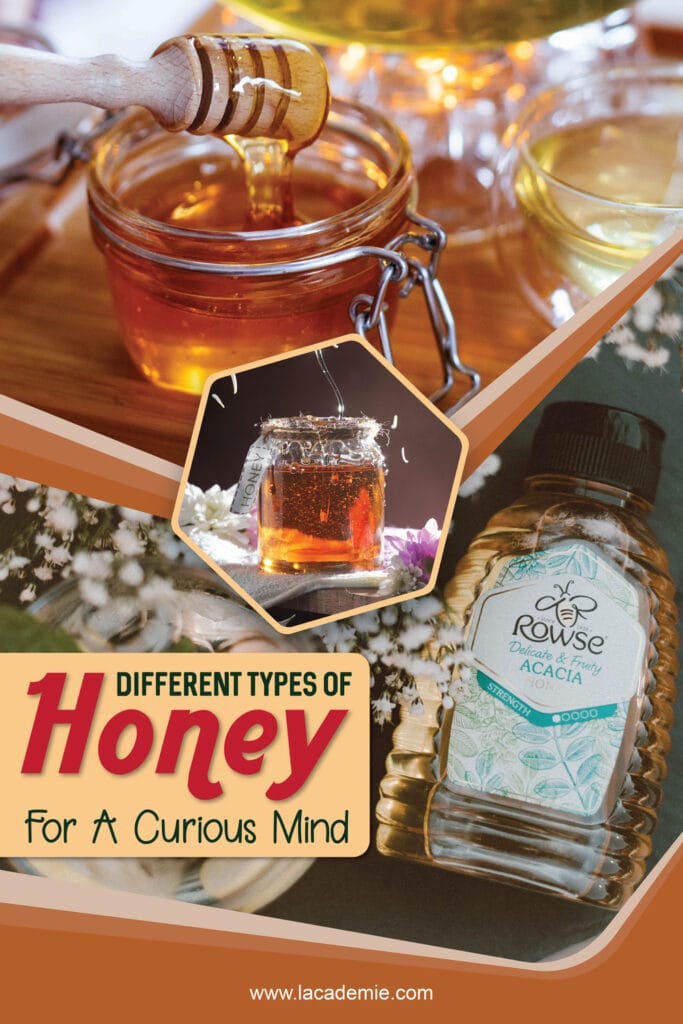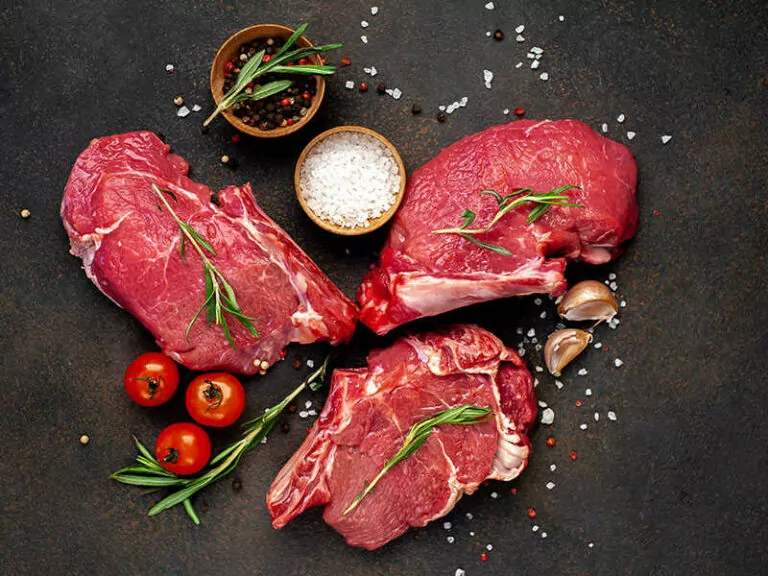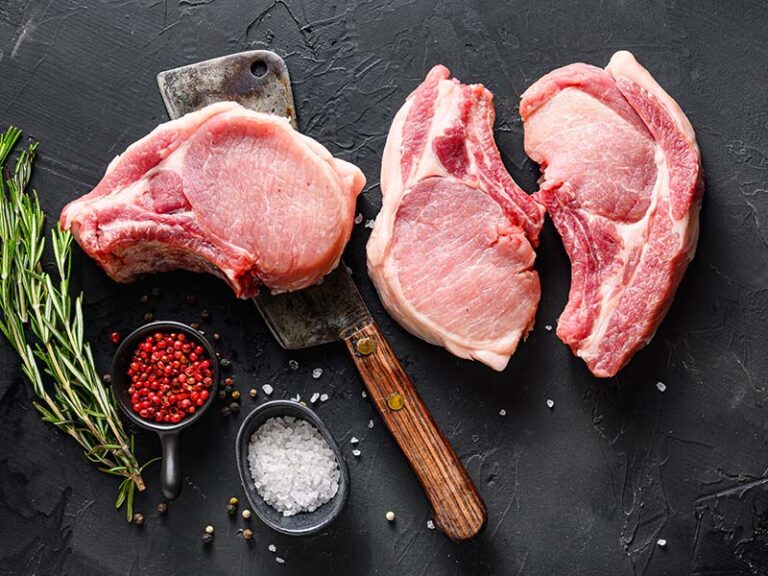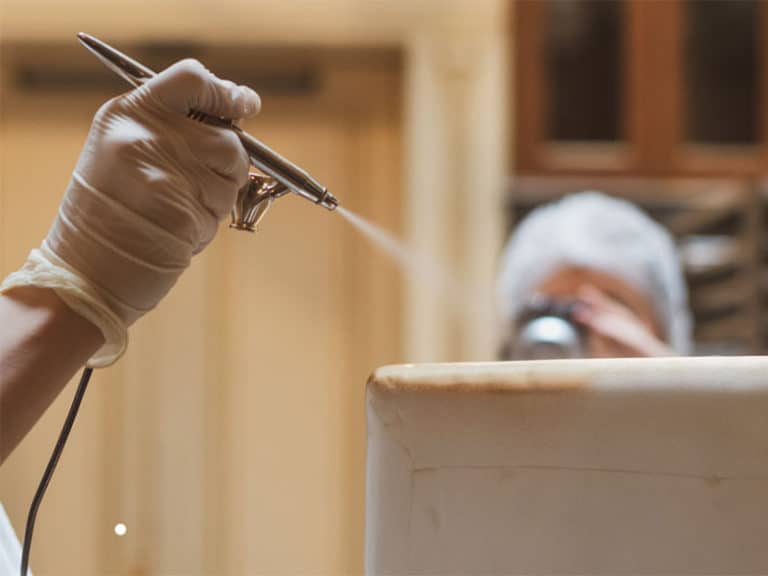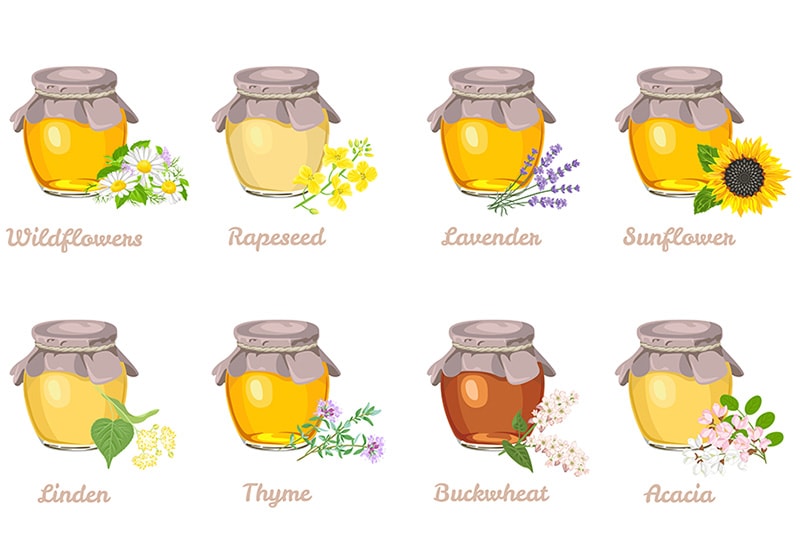
If you want to learn more about the different types of honey, you should read this article immediately! In this post, I will show you names, textures, flavors, characteristics, and maybe various storage methods of numerous honey types, so you can easily tell them apart!
Besides sugar, honey is a favorite natural sweetener used for cooking and medical purposes! You also don’t have to be concerned about whether honey has gluten content or not since it is mostly gluten-free.
However, each type of honey may have different usage and many other things, so you should learn about them beforehand to choose the best one!
16 Typical Light-Colored Honey You Should Know
The honey varieties in light color can be some of the most typical honey you have ever known! But what are their characteristics, and how can you tell them apart? Let’s find out through this section!
1. Acacia Honey
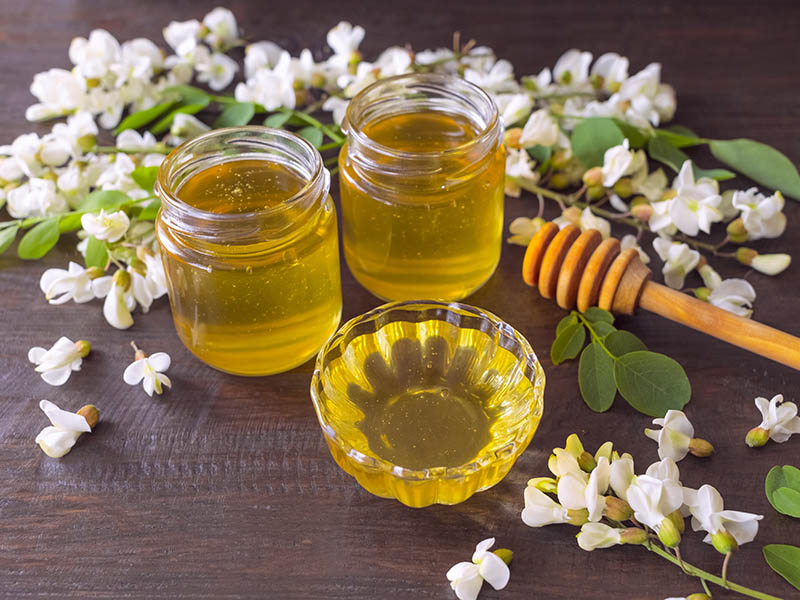
Acacia Honey is one of the most common honey types with a light amber color. It is low in glucose and high in fructose, thereby is safe for people with diabetes to consume.
Acacia Honey consists of a pretty mild taste with a hint of a floral note. The Acacia texture is fluid and slow to crystallize.
Let’s see the differences between variations of Acacia Honey around the world!
2. Alfalfa Honey
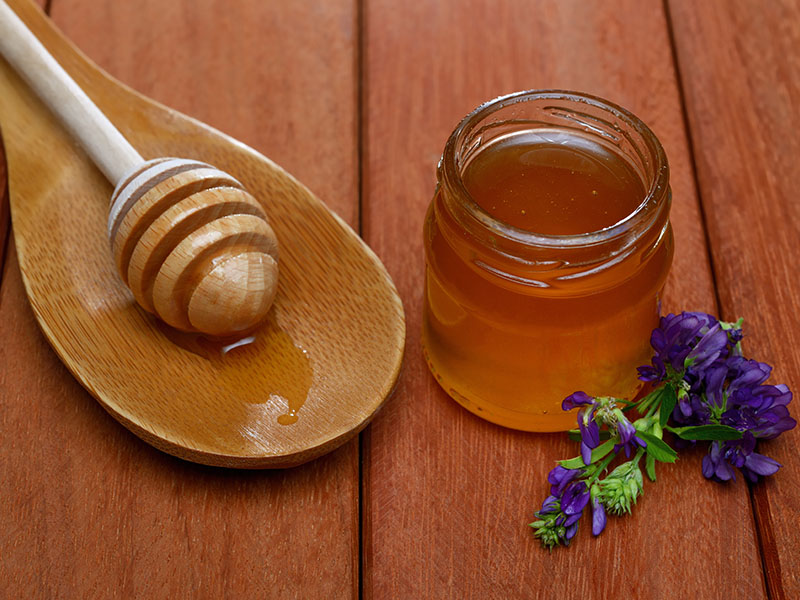
Alfalfa Honey, also called Lucerne honey, is less sweet than many other honey varieties. It contains nectar from alfalfa flowers, so it also has a strong floral taste. The honey’s color ranges from yellow to amber. Its texture is quite thick and dense.
Honey lovers will likely eat Alfalfa Honey directly from its jar. Still, this honey type is also a wonderful baking ingredient and a mild sweetener for teas, lemonades, milkshakes, and smoothies!
3. Macadamia Honey
Macadamia Honey is typical honey that can be produced in Australia and Hawaii. Manufacturers can make it into the most delicious honey mustard that you’ve ever known! It dives in light amber, tastes floral and nutty with a thick and pasty consistency.
Macadamia Honey is great to pair with most desserts and snacks such as fruit, yogurt, waffles, oatmeal, pancakes, etc. However, if you or your children have an allergy to nuts like macadamia, you should avoid this type of honey!
4. Blueberry Honey
Blueberry Honey is another type of honey bathed in light amber. It has a smooth, thick texture and a toasty, pleasant flavor with some herbal notes and a tangy blueberry aftertaste. This can be the best honey to pair with some pancakes for a filling breakfast!
5. Clover Honey
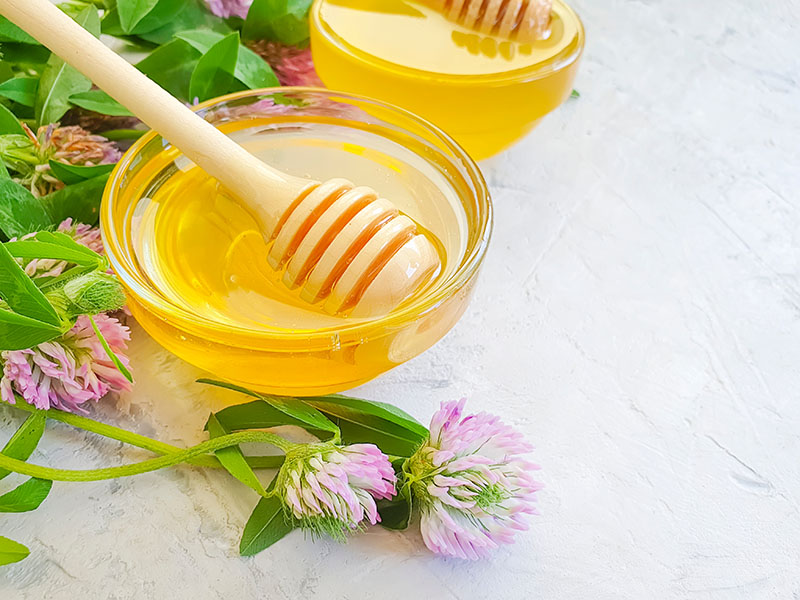
Clover Honey has a really light shade and thick, spreadable texture that is more fluid than other varieties. Its color seems to be the lightest shade, ranging from white to pale yellow to amber, according to the source and the regions.
Clover Honey is made from the nectar of clover flowers, so it tastes mild, sweet with a floral fragrance. It may also leave a sour yet pleasant aftertaste. Therefore, this honey is highly recommended to use in salad dressings or sauces.
6. Orange Blossom Honey
Orange Blossom Honey is often light in color, which is white to pale amber. It has a fresh aroma with a slight fruity citrus aftertaste. It is also very subtle in flavor and smooth in texture. It originates from Mexico and Spain, but you can easily find it in America!
Orange Blossom Honey is a great dressing for pastries and bread that can make a perfect breakfast in the summer! You can always add it to your favorite tea as an ideal sweetener! Make sure to purchase raw, unfiltered Orange Blossom Honey!
7. Sage Honey
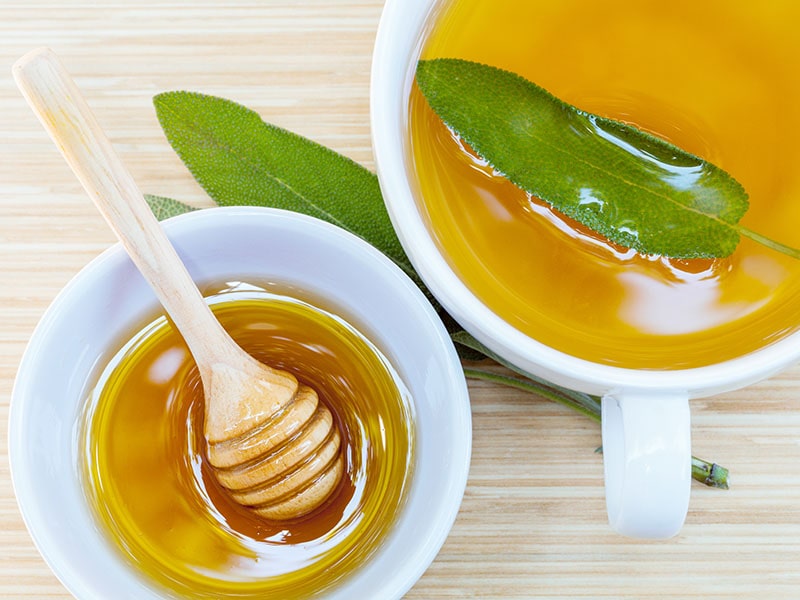
Sage Honey also dives in light-to-moderate amber color; however, its texture is denser and heavier than other light-colored varieties. It seldom granulates, so many people really love it at this point! Sage Honey tastes delicate and less sweet than other honey types.
Due to the fact that Sage Honey crystallizes very slowly, commercial brands usually mix it with other honey types to stop them from granulating too fast.
Learn how to make your own Sage Honey at home!
8. Fireweed Honey
Fireweed Honey is a popular product in cooking, especially grilling and baking. Its flavor is special since it’s complicated yet mostly sweet and buttery with a twist of spice. It’s spreadable when standing alone. It’s so clear in color that you can almost see it through!
People even call Fireweed Honey the “Champagne of Honey” for its unique characteristics! It is from Alaska and the Pacific Northwest, but it’s actually available everywhere.
9. Tupelo Honey
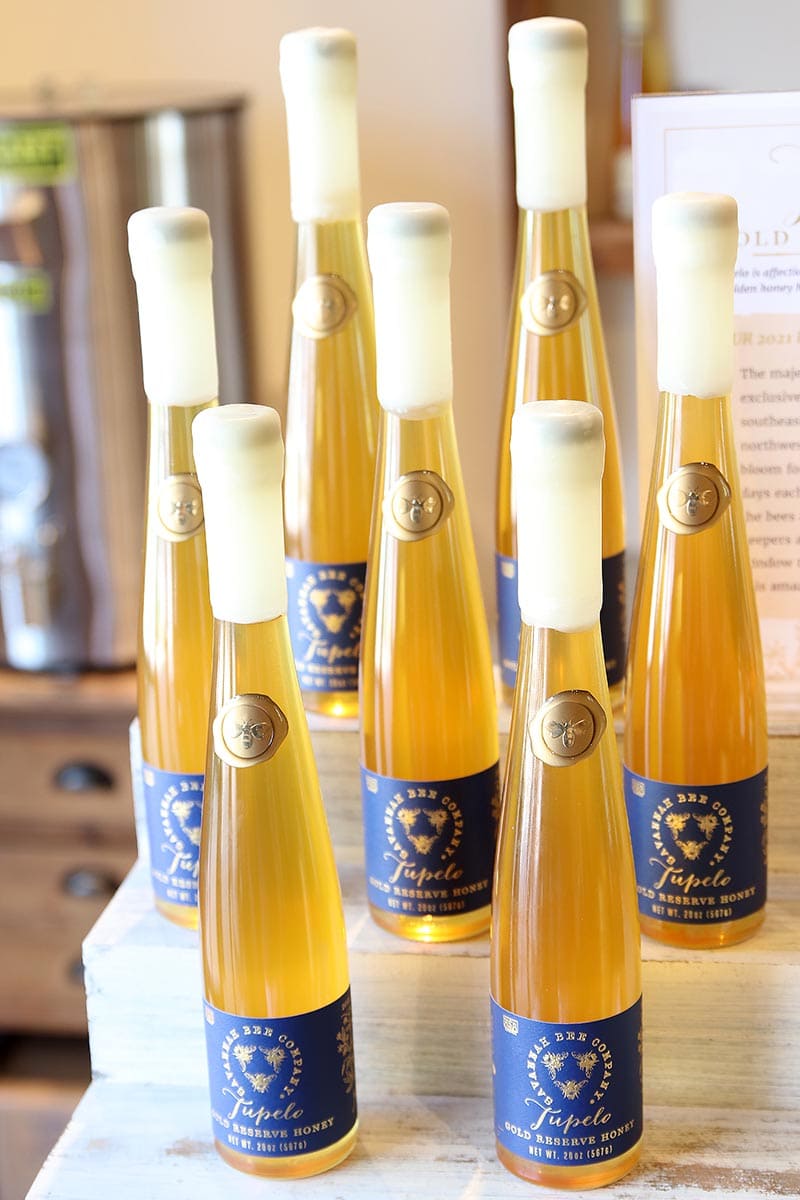
Tupelo Honey is a famous rare honey variety since its harvest season is once a year plus a complicated process. It is sweeter and more aromatic than most other honey types with a high fructose content; therefore, the crystallization occurs slowly.
Tupelo Honey has a light amber color with a faint green undertone. It tastes floral, fruity, spicy with a smooth and buttery texture. You can mix it in BBQ sauce or pour it on ice cream for the best sweet treat ever!
10. Linden Honey
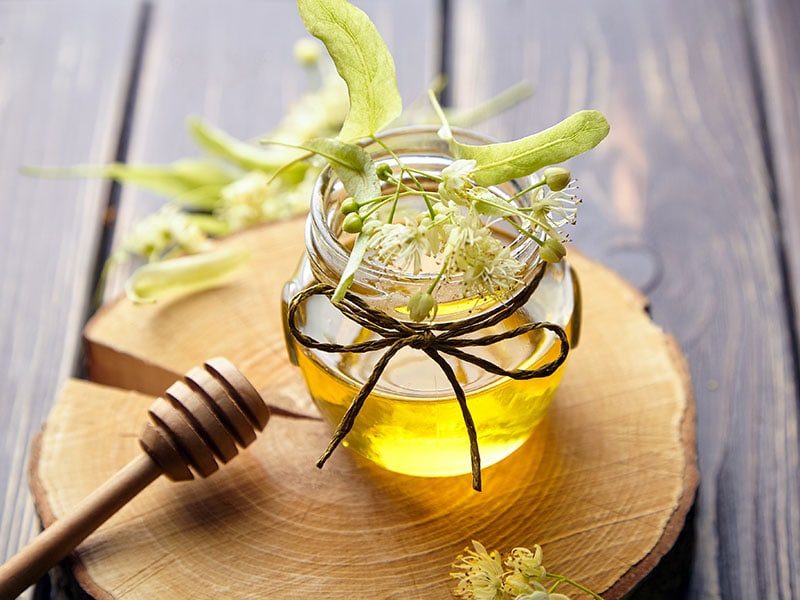
Linden Honey is made from the nectar of linden tree’s blossoms found in Denmark, resulting in a pale yellow liquid and a mild, bright, sweet flavor with a bitter aftertaste. Its scent is usually described as a fresh woody smell, which will give you a really refreshing feeling!
Linden Honey’s texture is smooth and pasty. It is the honey variety that people will use when they get a cold, sore throat, fevers, or need to ease the anxiety! It is an extraordinary sweetener for a cup of herbal tea before bed!
You can also use Linden Honey for some typical dessert dishes in the spring. Enjoy it with some cheese for a delicious sweet treat! You’ll be super satisfied with the final result!
11. Aster Honey
Aster Honey is thick and smooth with a powerful floral aroma. It has a light, clear shade like Clover Honey, which is a pale yellow to amber. It seems to granulate quicker than other honey types.
Aster Honey is tasty with a slightly sweet flavor. You can eat it directly from the jar or use it as a sweetener for your tea or dishes.
12. Leatherwood Honey
Leatherwood Honey consists of a signature ochre-yellow color. It has a creamy texture with consistent crystallization. Its scent is robust with balsamic and fresh citrusy notes.
Leatherwood Honey tastes so pleasant, floral, and buttery that it can melt right onto your tongue! There’s a slightly spicy aftertaste. You can pair it with cakes, muffins, teas, and even coffee.
Here are the three best ways to consume Leatherwood Honey!
13. Ironbark Honey
Ironbark Honey will be a wonderful glaze for the meats in your BBQ party! It has a beautiful light or pale amber color and a good scent of fresh beeswax. Due to its pretty sweet and buttery flavor with a creamy texture. Many Australians love this honey!
You can add a touch of sweetness to your favorite smoothies and many other sweet shakes and drinks with some Ironbark Honey! I’m sure that you won’t be disappointed!
14. Blue Gum Honey
Blue Gum Honey has a smooth, dense consistency and refreshing flavor with hidden minty eucalyptus notes. It also dives from white to light amber, and you should use it to spread on toast and wafers for a filling breakfast!
15. Basswood Honey
You may probably guess the flavor of this amber-colored honey due to its name. Yes, Basswood Honey tastes woody, fresh, and a bit bitter. It has a low content of pollen grains, thereby crystallizing really slowly and making it easier to blend into teas or marinades.
16. Sourwood Honey
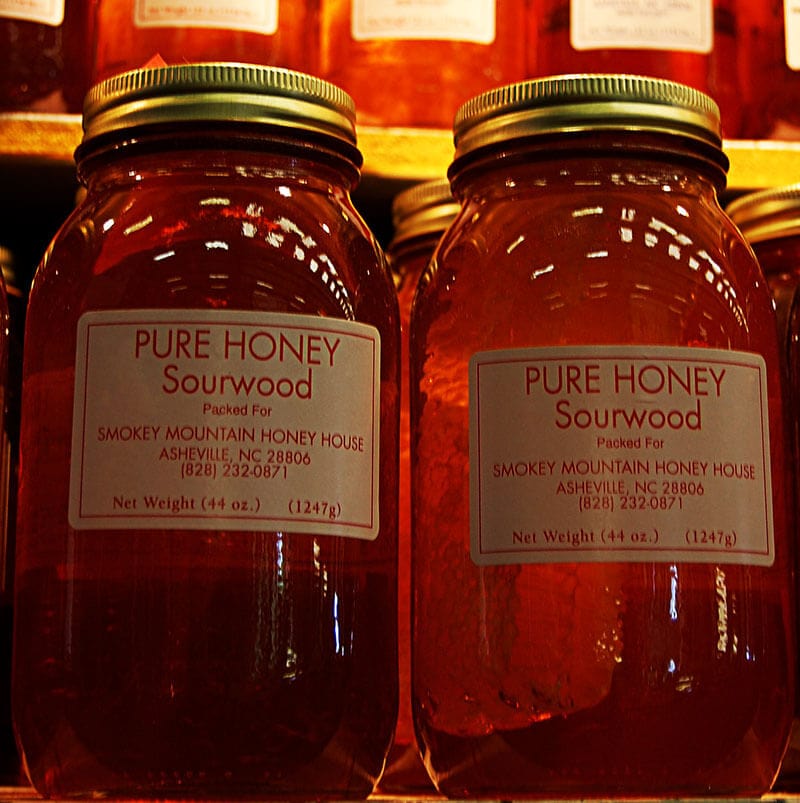
Sourwood Honey originates from America and is made from the Sourwood blossom nectar that gives a lovely amber color. Its flavor is similar to caramel with a really rich, buttery sweet taste with a note of anise and light spices.
Sourwood Honey is a very popular smooth, syrupy honey spread on toast or muffins.
10 Spectacular Dark Versions Of Honey You Have To Try Once
Do you agree that something in a dark shade always looks mysterious and makes you want to explore more? You may immediately think of a golden liquid when someone mentions honey, but how about the dark honey varieties? Scroll down to learn more about them!
17. Manuka Honey
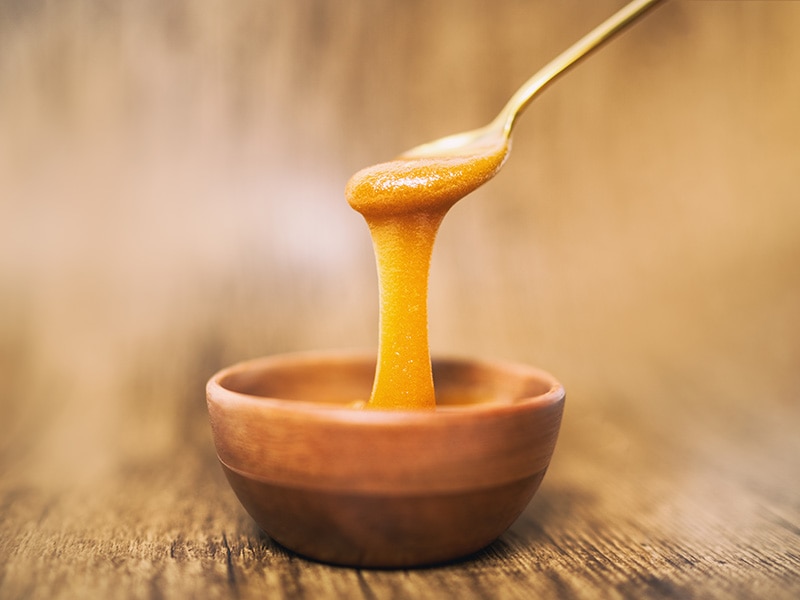
Colors are one of the gaps separating Manuka Honey from other raw varieties. It includes a dark brown shade and a sweet, herbaceous taste with a nutty and light bitter hint, but less sweet thansome standard honey.
Manuka Honey has a thick, creamy, spreadable texture that looks like jelly. The special thing is it does not stay at the standard liquid form when at room temperature. You should know that the intense taste of this honey may vary based on the nectar source.
You can find the most authentic Manuka Honey products at local specialty food stores or even online platforms. It is best when used in teas, smoothies, yogurts, toasts, and many other desserts!
Eating Manuka Honey can gain you tons of health benefits!
18. Avocado Honey
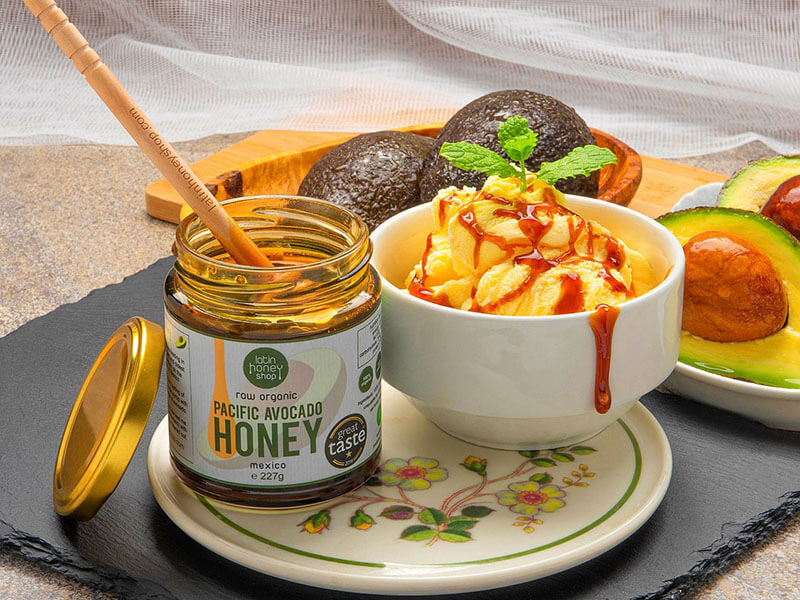
Although it is named after the fruit, Avocado Honey tastes nothing like avocado! It actually has a complex and robust flavor with toasty notes. It also consists of a silky, thick, creamy texture with a dark amber color.
Avocado Honey can be a delicious ingredient in your salad dressing or meat glaze. You can also use it to spread on baked fresh or add to fruit smoothies for a delectable breakfast!
19. Buckwheat Honey
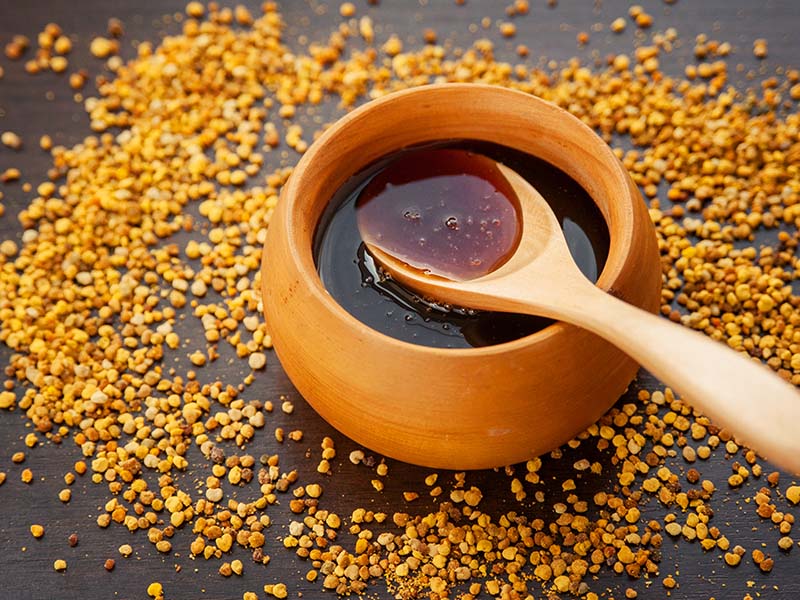
Buckwheat Honey is really dark, ranging from dark purple to black with a reddish tinge. This distinctive color comes from the buckwheat flowers’ nectar. It tastes less sweet than other wildflower honey, but it is intense and spicy with a crystal, thick texture.
Buckwheat Honey can be an amazing glaze for meats and one of the best ingredients for making mead! You may also use this honey to treat sore throats and coughs. It is also an excellent food for diabetes that lowers blood sugar levels.
20. Pine Tree Honey
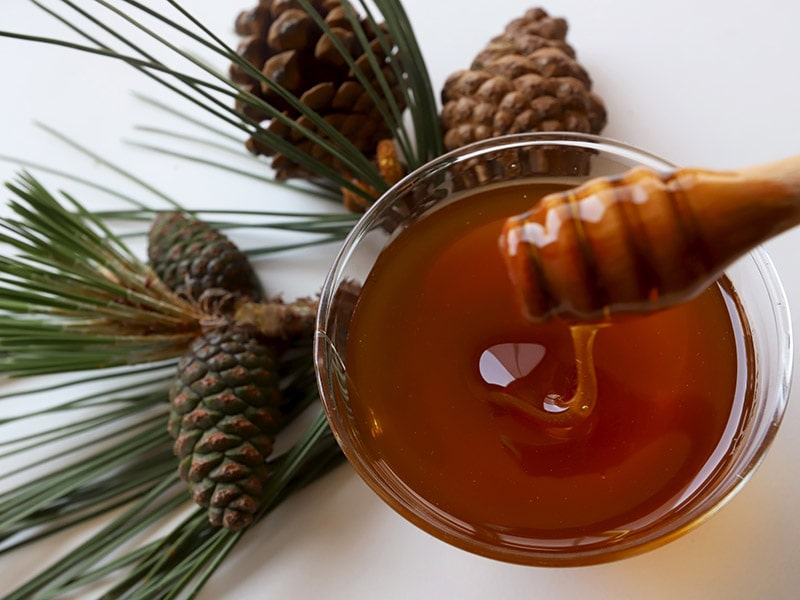
Instead of flower nectar, Pine Tree Honey is made from honeydew found in Turkey, Greece, the Middle East, or somewhere with pine forests. It also has a dark amber color and a slightly bitter flavor with woody undertones. It consists of an extremely thick consistency!
Pine Tree Honey with yogurt is a favorite bread spread of Turkish and Greek. They usually make it a filling breakfast to start a day with.
21. Heather Honey
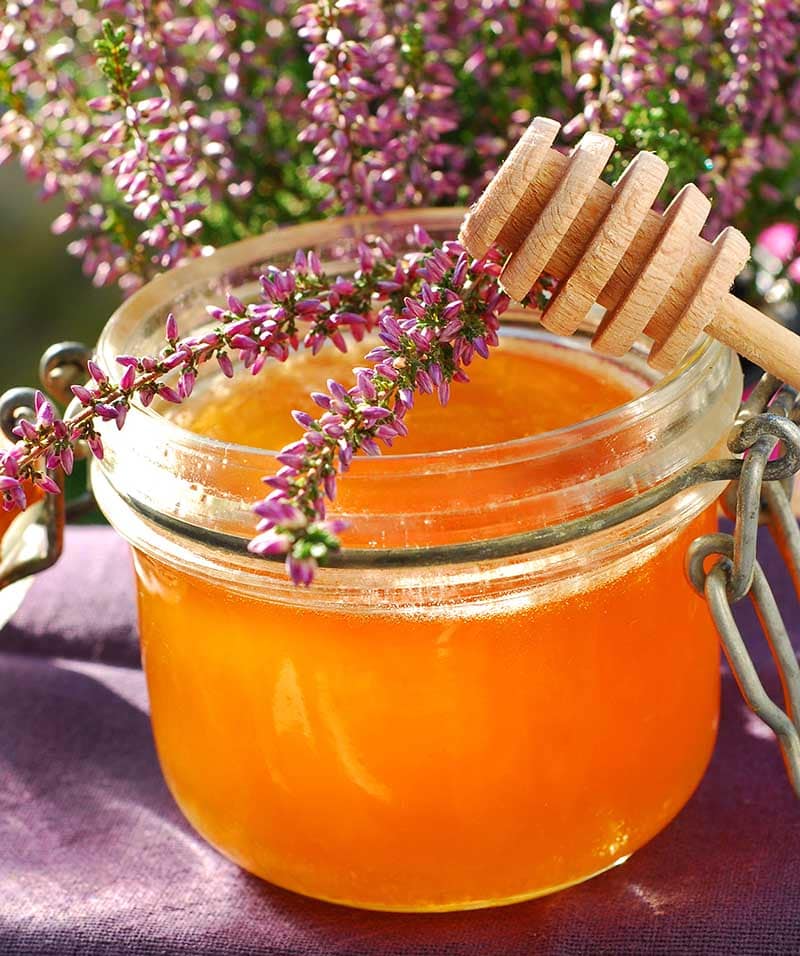
I really love the dark shade of Heather Honey! It ranges from reddish or orange to dark amber. It tastes completely different from any other type of honey with a tangy, smoky, robust, and almost bitter flavor that presages a long-lasting aftertaste.
Heather Honey has a thick and gelatinous consistency usually used in fermented beverages. It will also be a perfect topping for ice cream, yogurt, or waffles! You may also want to use it to glaze chicken, lamb, seafood, or with smoky ham, baked goods, and cold meats.
22. Chestnut Honey
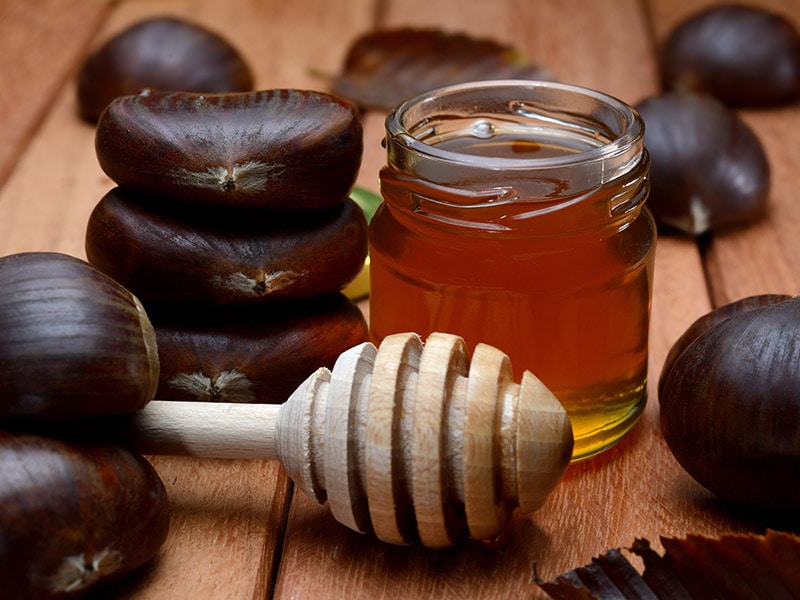
Chestnut Honey has a complex taste with a less sweet yet robust, smokey, and peppery flavor. It also has a bitter aftertaste and golden brown to nearly black color. Also, it is actually slow to granulate, so don’t worry about the preservation.
You may want to pair Chestnut Honey with some cheese toast for a great breakfast with some walnuts.
23. Eucalyptus Honey
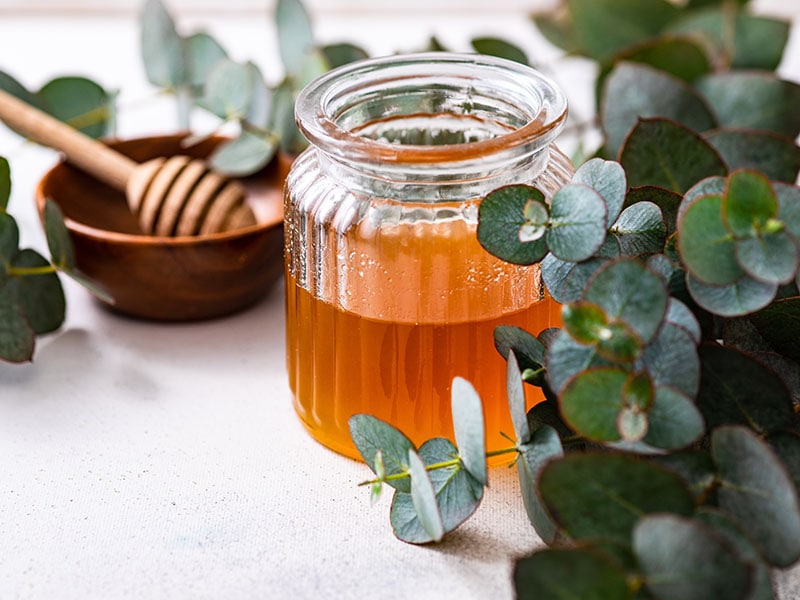
Eucalyptus Honey consists of a medium-dark color with a red tinge. Its flavor is distinctively herbal and fresh, with a hint of caramel and menthol. It has a creamy, thick density that gives off the butterscotch vibe.
Eucalyptus Honey can enrich the salad dressing and delicious cheeses. It can also be a powerful sweetener for your teas and fruit juices. You may want to use it as a natural cure for treating colds, flu, and other diseases, too!
24. Forest Honey
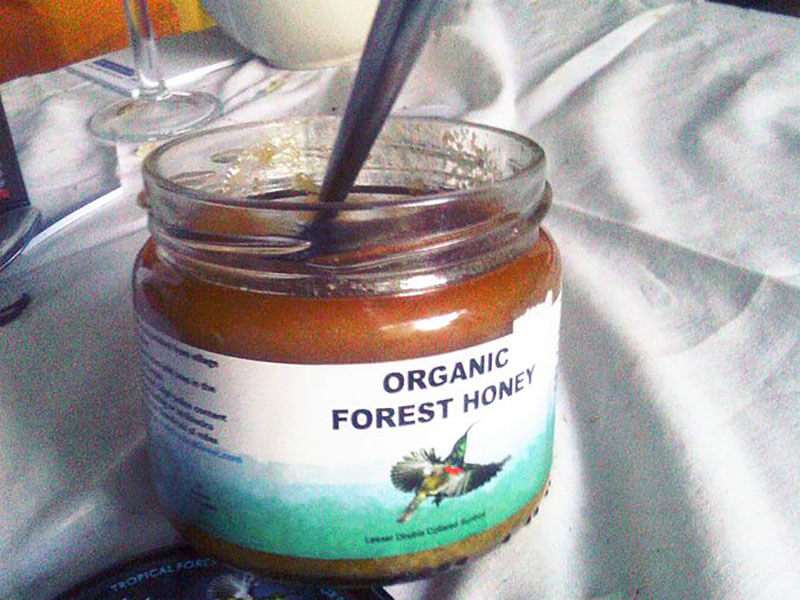
Forest Honey is another type made of honeydew, not blossom nectar. It has a really dark amber color with green fluorescence. It satisfies honey lovers with its strong, woody, slightly sweet taste, warm aroma, and dense texture.
25. Dandelion Honey
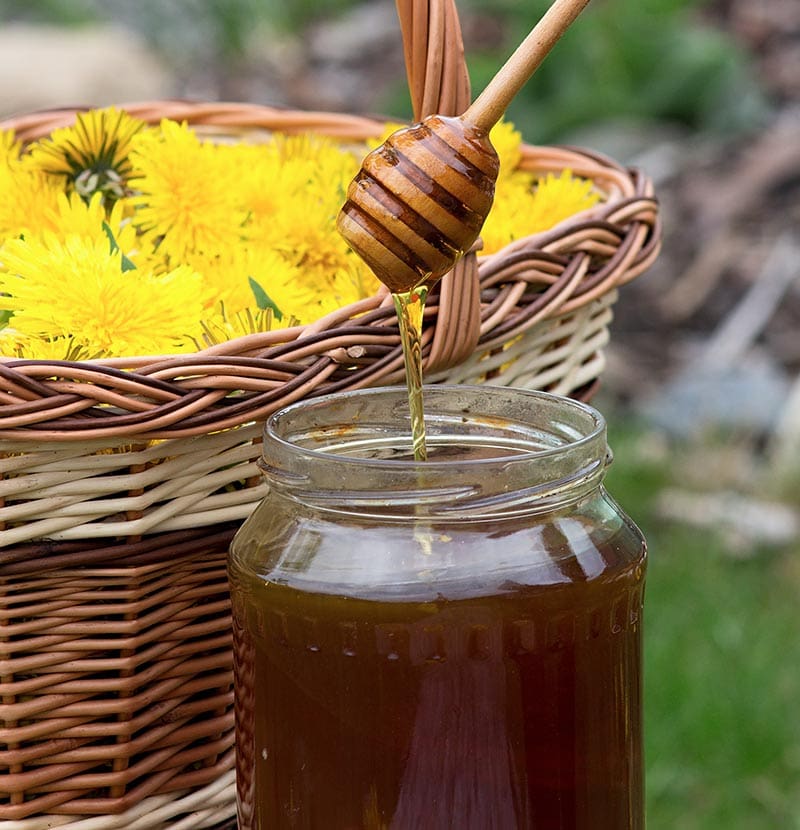
Dandelion Honey is actually not honey made by bees, but a syrup from dandelion flowers and sugar. It has a diverse color, which ranges from golden yellow to a darker hue. Its flavor is robust and slightly sour.
Dandelion Honey includes a pleasant, distinctive floral aroma of spring flowers and a thick caramel texture, which you can observe with bare eyes.
Want to make Dandelion Honey from scratch? Here’s basically how!
26. Jarrah Honey
Jarrah Honey is very dark in color and smooth, silky in texture. It tastes malty and nutty with a long caramel aftertaste. It can also be used in medical dressing because it has antibacterial properties that can treat everything like wounds or skin irritation.
Is Your Favorite Type Of Honey Here In This List?
And that’s everything I can share with you about different types of honey! They are the most typical honey that you can find everywhere! Of course, each variety of honey will have distinct characteristics and applications, so I hope you can pick a suitable one!
Don’t forget to like and share this article if it has helped you identify the different honey types you are having. Also, if you have something to say or discuss, just write me some words below this article and I will reply to you as soon as possible! Have a nice day, pal!
